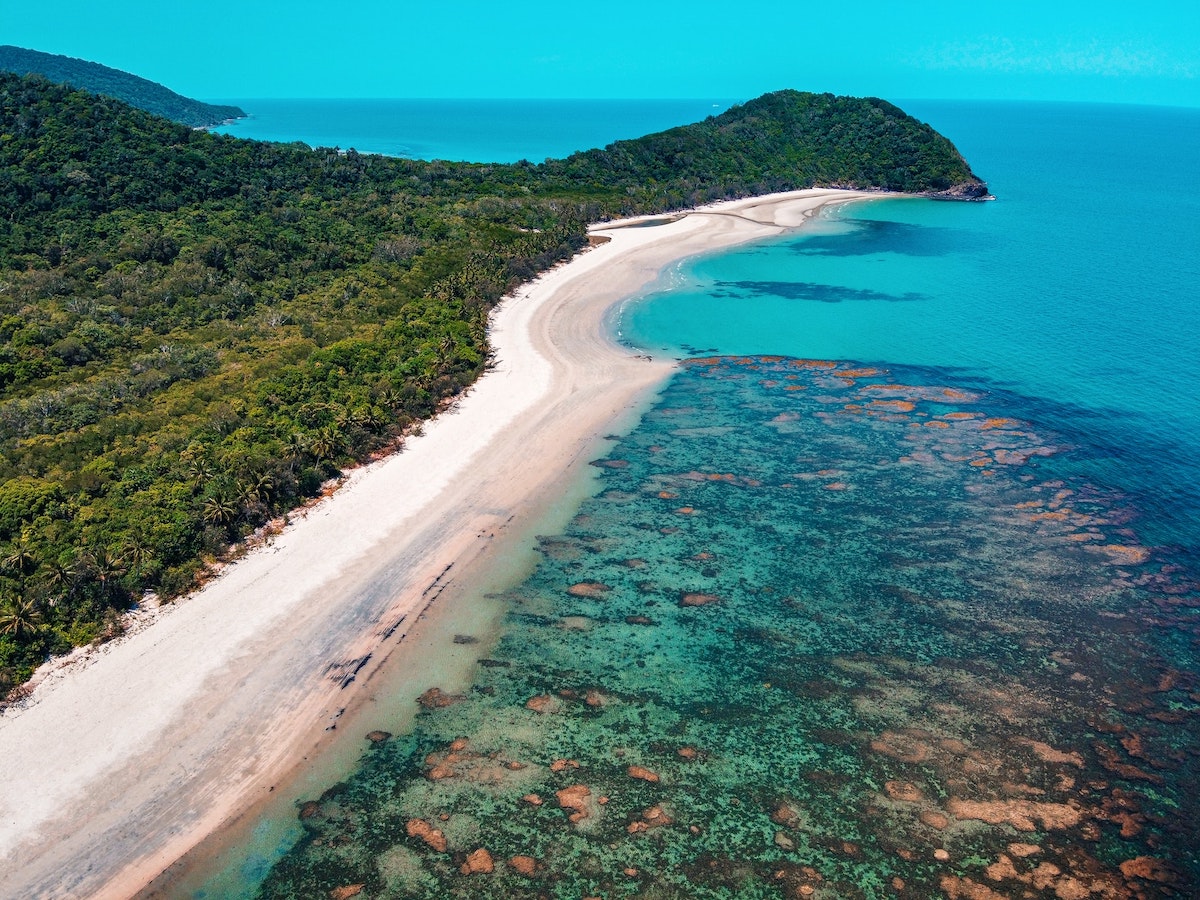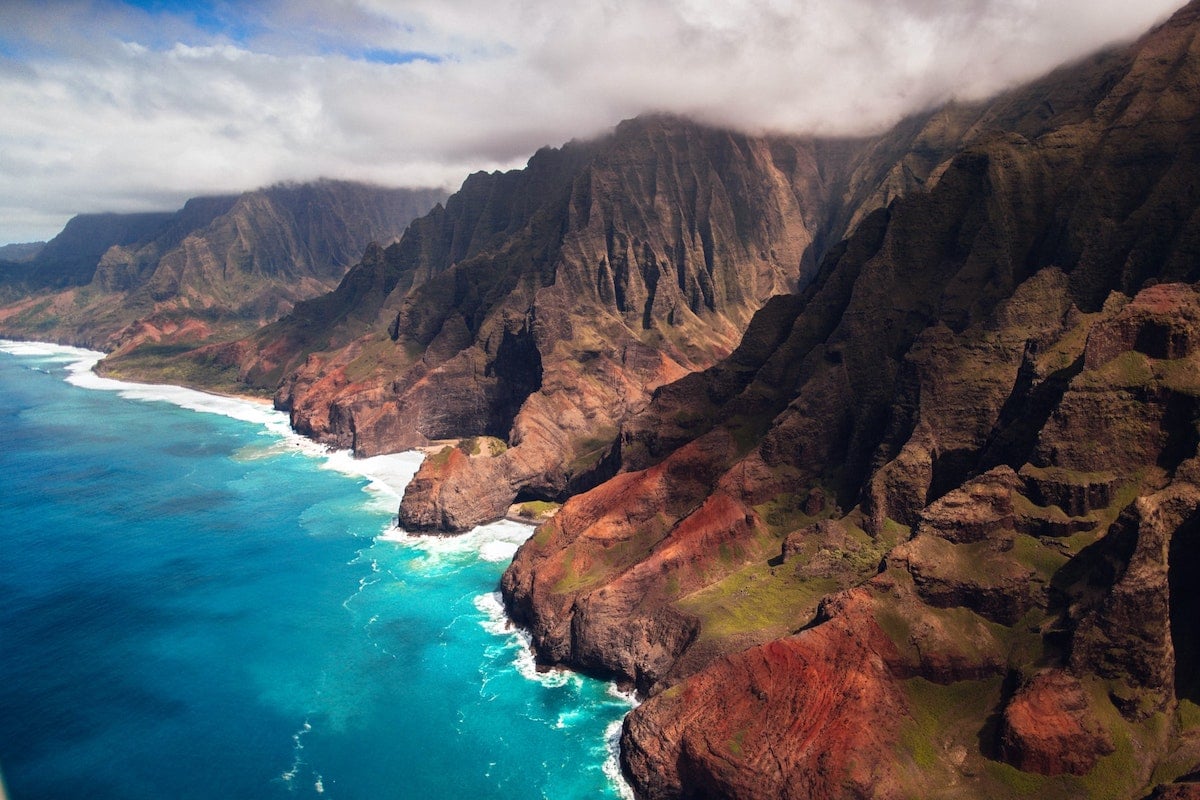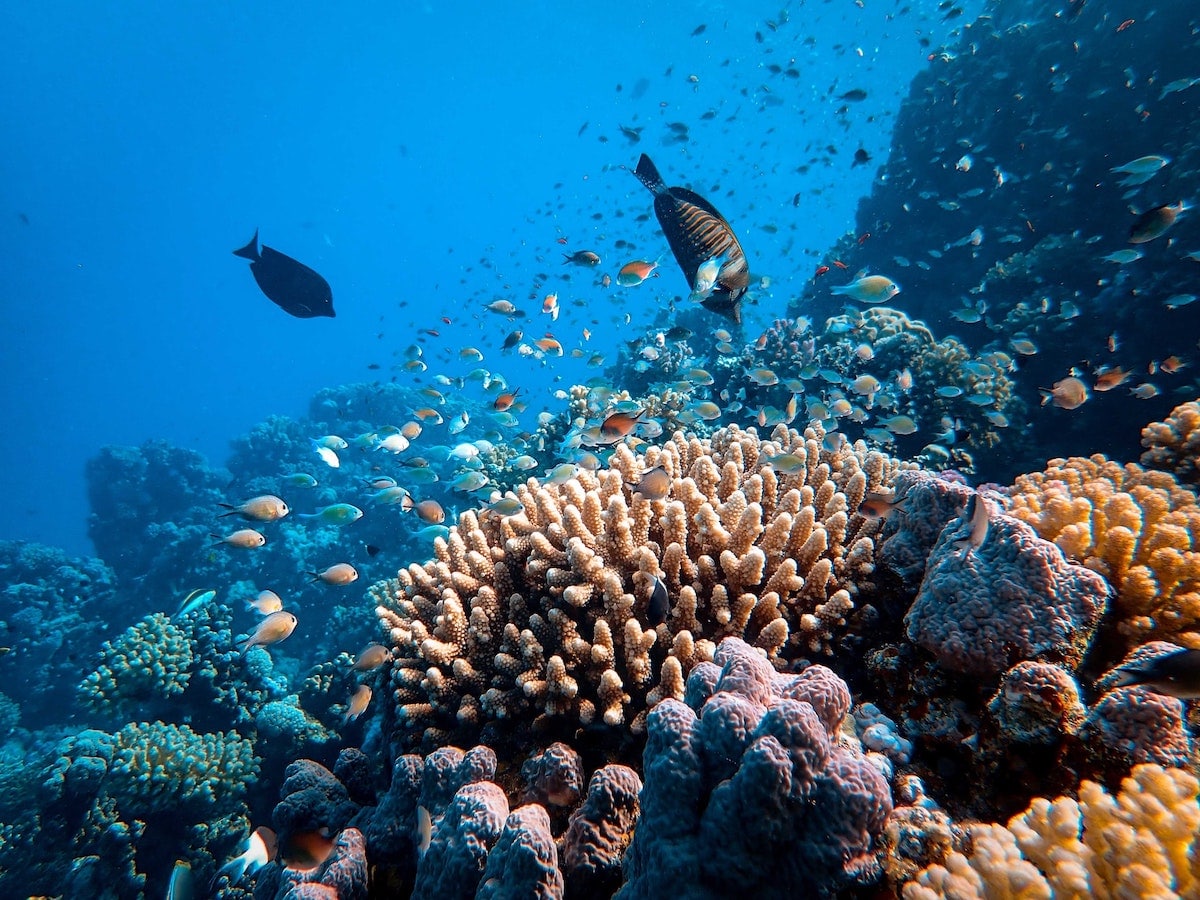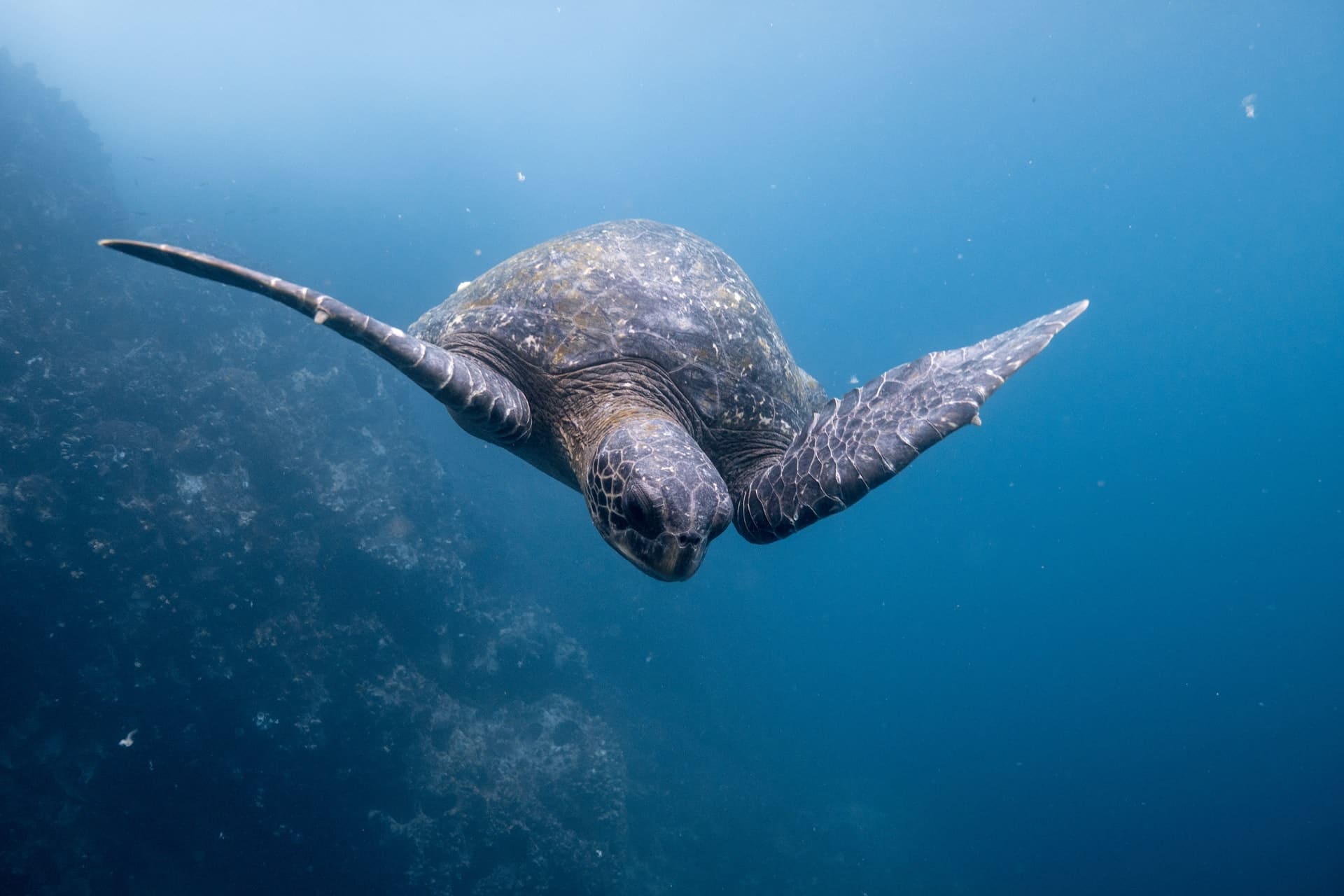Marine Life & Conservation Blogs
The 11 best places to snorkel with sea turtles
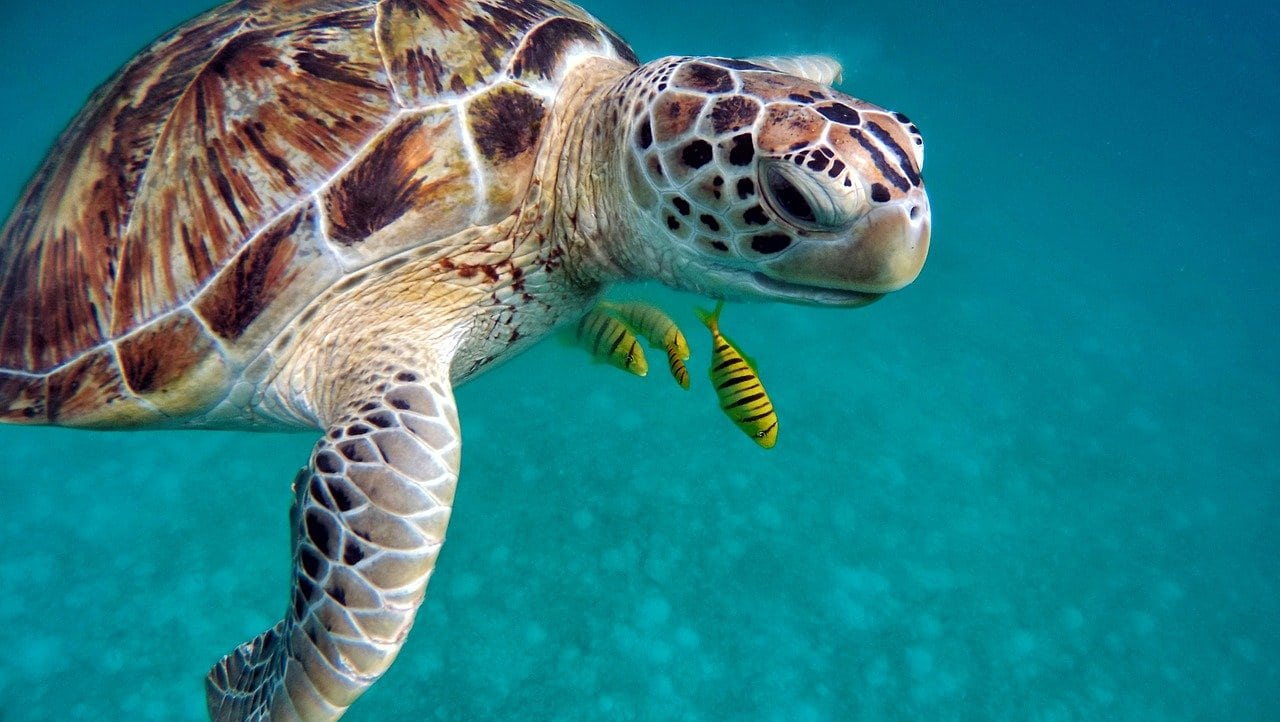
Sea turtles are some of the most remarkable animals you can encounter in our oceans. They have existed for over 100 million years, can live for over a century, and some swim more than 10,000 miles between nesting and foraging grounds each year. There are seven different species of sea turtle, and you can find them at locations around the world. Here is our roundup of the best places to snorkel with these charming animals.
1) Australia
Whether you choose to explore Australia’s eastern or western coast, there are numerous places to go snorkeling with sea turtles. The Great Barrier Reef has world-class snorkeling and hosts six of the seven species of sea turtle. A visit to this special area also offers the chance to explore the oldest rainforest in the world, the Daintree Rainforest. Western Australia also has great snorkeling and numerous sea turtles, especially at Shark Bay, Ningaloo Reef and the Muiron Islands.
2) Malaysia
Mabul, Sipadan and Kapalai offer some of the best and most diverse snorkeling opportunities in the world, especially for sea turtle fans. Sipadan’s bright blue waters are teeming with big fish and huge green sea turtles, whilst Mabul is the place to go for spotting sea turtles cruising along coral reefs. Make sure you visit in August if you want to see nesting sea turtles at Sipadan.
3) The Maldives
Maldives scuba diving is high on many divers’ wish lists, but you don’t need to be a diver to make the most of this stunning destination. There are excellent snorkeling opportunities and numerous sea turtles throughout the atolls, including leatherback, loggerhead, hawksbill, green and olive ridley sea turtles. To surround yourself with green sea turtles, visit Lhaviyani Atoll and especially the seagrass meadows of Kuredu Island. This idyllic atoll hosts almost half of the Maldives’ green sea turtles.
4) Wakatobi, Indonesia
Wakatobi is renowned for having some of the world’s most biodiverse reefs and has easy snorkeling conditions. Sitting in the Coral Triangle, this special destination has everything from prized critters through to schooling reef fish and plenty of sea turtles. Snorkel over the colorful outer reefs to find adult Hawksbill turtles munching on huge sponges or simply walk off the beach to look for juvenile and adult green sea turtles at the seagrass meadows.
5) Akumal, Mexico
Mexico is another top destination for snorkeling with sea turtles, especially at Akumal in the Yucatan Peninsula. Akumal means ‘the place of the turtle’, so it’s no surprise to find out this is a great place to swim with sea turtles. With numerous green sea turtles and loggerheads there, which are used to the presence of humans, it’s an experience not to miss.
6) Hawaii
If you’re visiting Hawaii, you have a good chance of encountering sea turtles whichever island you choose, but Oahu is one of the best. You can either join snorkeling tours to meet the turtles or explore without a guide. Laniakea Beach (also known as Turtle Beach) is one of the most popular places to swim with turtles but there are plenty of quieter turtle hotspots around the island.
7) Egypt
People go scuba diving in Egypt every year and with good reason. It is one of the most accessible and affordable places to experience vibrant reefs, warm water snorkeling and year-round sunshine. It truly has something for everyone, including snorkelers. You can spot sea turtles on any of Egypt’s reefs but visit Abu Dabbab Beach at Marsa Alam for almost guaranteed green sea turtle encounters. You will also be able to swim with dugongs whilst you’re there.
8) Greece
Zakynthos (also known as Zante) is the top place in Europe to swim with sea turtles. In the summer months, thousands of loggerhead turtles head inshore to lay their eggs on the beaches. You can snorkel with them at Zakynthos and at nearby Cameo Island, or go island hopping and watch them come ashore at Kefalonia’s beaches.
9) The Galapagos Islands
Wild and remote, the Galapagos Islands are an iconic haven for wildlife above and below the waterline, and sea turtles are no exception. There are numerous snorkeling spots where you’ll find sea turtles and Galapagos green sea turtles nest on some of the islands’ beaches. Wherever you snorkel, the waters are teeming with life. There is nowhere else in the world where you can swim with sea turtles, marine iguanas, sea lions, penguins, schools of fish and more. Don’t miss it.
10) French Polynesia
French Polynesia, with its lush volcanic islands, luxurious resorts and soft white sands, is the perfect destination to get away from it all. As if that’s not enough, French Polynesia is also stunning underwater, with calm lagoons ideal for snorkeling, healthy coral reefs and abundant marine life. You can go snorkeling with sea turtles at Tahiti and Moorea, where the shallow waters make it ideal for new snorkelers.
11) Barbados
Barbados is an idyllic Caribbean destination, with azure waters and numerous sea turtles, including green, hawksbill and leatherback turtles. There are a handful of snorkeling tour operators and plenty of infrastructure, meaning you can get out and swim with the turtles easily. If you don’t want to join a tour, grab your snorkeling gear and go in search of sea turtles off the west coast beaches. Make sure you follow local snorkeling safety guidelines and enjoy.
Kathryn Curzon, a shark conservationist and dive travel writer for Scuba Schools International (SSI), wrote this article.
Marine Life & Conservation Blogs
Creature Feature: Dusky Shark

 In this series, the Shark Trust will be sharing amazing facts about different species of sharks and what you can do to help protect them.
In this series, the Shark Trust will be sharing amazing facts about different species of sharks and what you can do to help protect them.
This month we’re taking a look at the Dusky Shark, a highly migratory species with a particularly slow growth rate and late age at maturity.
Dusky sharks are one of the largest species within the Carcharhinus genus, generally measuring 3 metres total length but able to reach up to 4.2 metres. They are grey to grey-brown on their dorsal side and their fins usually have dusky margins, with the darkest tips on the caudal fin.
Dusky Sharks can often be confused with other species of the Carcharhinus genus, particularly the Galapagos Shark (Carcharhinus galapagensis). They have very similar external morphology, so it can be easier to ID to species level by taking location into account as the two species occupy very different ecological niches – Galapagos Sharks prefer offshore seamounts and islets, whilst duskies prefer continental margins.
Hybridisation:
A 2019 study found that Dusky Sharks are hybridising with Galapagos Sharks on the Eastern Tropical Pacific (Pazmiño et al., 2019). Hybridisation is when an animal breeds with an individual of another species to produce offspring (a hybrid). Hybrids are often infertile, but this study found that the hybrids were able to produce second generation hybrids!
Long distance swimmers:
Dusky sharks are highly mobile species, undertaking long migrations to stay in warm waters throughout the winter. In the Northern Hemisphere, they head towards the poles in the summer and return southwards towards the equator in winter. The longest distance recorded was 2000 nautical miles!
Very slow to mature and reproduce:
The Dusky Shark are both targeted and caught as bycatch globally. We already know that elasmobranchs are inherently slow reproducers which means that they are heavily impacted by overfishing; it takes them so long to recover that they cannot keep up with the rate at which they are being fished. Dusky Sharks are particularly slow to reproduce – females are only ready to start breeding at roughly 20 years old, their gestation periods can last up to 22 months, and they only give birth every two to three years. This makes duskies one of the most vulnerable of all shark species.
The Dusky Shark is now listed on Appendix II of the Convention on the Conservation of Migratory Species (CMS), but further action is required to protect this important species.
Scientific Name: Carcharhinus obscurus
Family: Carcharhinidae
Maximum Size: 420cm (Total Length)
Diet: Bony fishes, cephalopods, can also eat crustaceans, and small sharks, skates and rays
Distribution: Patchy distribution in tropical and warm temperate seas; Atlantic, Indo-Pacific and Mediterranean.
Habitat: Ranges from inshore waters out to the edge of the continental shelf.
Conservation status: Endangered.
For more great shark information and conservation visit the Shark Trust Website
Images: Andy Murch
Diana A. Pazmiño, Lynne van Herderden, Colin A. Simpfendorfer, Claudia Junge, Stephen C. Donnellan, E. Mauricio Hoyos-Padilla, Clinton A.J. Duffy, Charlie Huveneers, Bronwyn M. Gillanders, Paul A. Butcher, Gregory E. Maes. (2019). Introgressive hybridisation between two widespread sharks in the east Pacific region, Molecular Phylogenetics and Evolution 136(119-127), https://doi.org/10.1016/j.ympev.2019.04.013.
Marine Life & Conservation Blogs
Creature Feature: Undulate Ray

 In this series, the Shark Trust will be sharing amazing facts about different species of sharks and what you can do to help protect them.
In this series, the Shark Trust will be sharing amazing facts about different species of sharks and what you can do to help protect them.
This month we’re looking at the Undulate Ray. Easily identified by its beautiful, ornate pattern, the Undulate Ray gets its name from the undulating patterns of lines and spots on its dorsal side.
This skate is usually found on sandy or muddy sea floors, down to about 200 m deep, although it is more commonly found shallower. They can grow up to 90 cm total length. Depending on the size of the individual, their diet can range from shrimps to crabs.
Although sometimes called the Undulate Ray, this is actually a species of skate, meaning that, as all true skates do, they lay eggs. The eggs are contained in keratin eggcases – the same material that our hair and nails are made up of! These eggcases are also commonly called mermaid’s purses and can be found washed up on beaches all around the UK. If you find one, be sure to take a picture and upload your find to the Great Eggcase Hunt – the Shark Trust’s flagship citizen science project.
It is worth noting that on the south coasts, these eggcases can be confused with those of the Spotted Ray, especially as they look very similar and the ranges overlap, so we sometimes informally refer to them as ‘Spundulates’.
Scientific Name: Raja undulata
Family: Rajidae
Maximum Size: 90cm (total length)
Diet: shrimps and crabs
Distribution: found around the eastern Atlantic and in the Mediterranean Sea.
Habitat: shelf waters down to 200m deep.
Conservation Status : As a commercially exploited species, the Undulate Ray is a recovering species in some areas. The good thing is that they have some of the most comprehensive management measures of almost any elasmobranch species, with both minimum and maximum landing sizes as well as a closed season. Additionally, targeting is entirely prohibited in some areas. They are also often caught as bycatch in various fisheries – in some areas they can be landed whilst in others they must be discarded.
IUCN Red List Status: Endangered
For more great shark information and conservation visit the Shark Trust Website
Image Credits: Banner – Sheila Openshaw; Illustration – Marc Dando
-

 News3 months ago
News3 months agoHone your underwater photography skills with Alphamarine Photography at Red Sea Diving Safari in March
-

 News3 months ago
News3 months agoCapturing Critters in Lembeh Underwater Photography Workshop 2024: Event Roundup
-

 Marine Life & Conservation Blogs3 months ago
Marine Life & Conservation Blogs3 months agoCreature Feature: Swell Sharks
-

 Blogs2 months ago
Blogs2 months agoMurex Resorts: Passport to Paradise!
-

 Blogs2 months ago
Blogs2 months agoDiver Discovering Whale Skeletons Beneath Ice Judged World’s Best Underwater Photograph
-

 Gear Reviews2 weeks ago
Gear Reviews2 weeks agoGEAR REVIEW – Revolutionising Diving Comfort: The Sharkskin T2 Chillproof Suit
-

 Marine Life & Conservation2 months ago
Marine Life & Conservation2 months agoSave the Manatee Club launches brand new webcams at Silver Springs State Park, Florida
-

 Gear Reviews3 months ago
Gear Reviews3 months agoGear Review: Oceanic+ Dive Housing for iPhone


